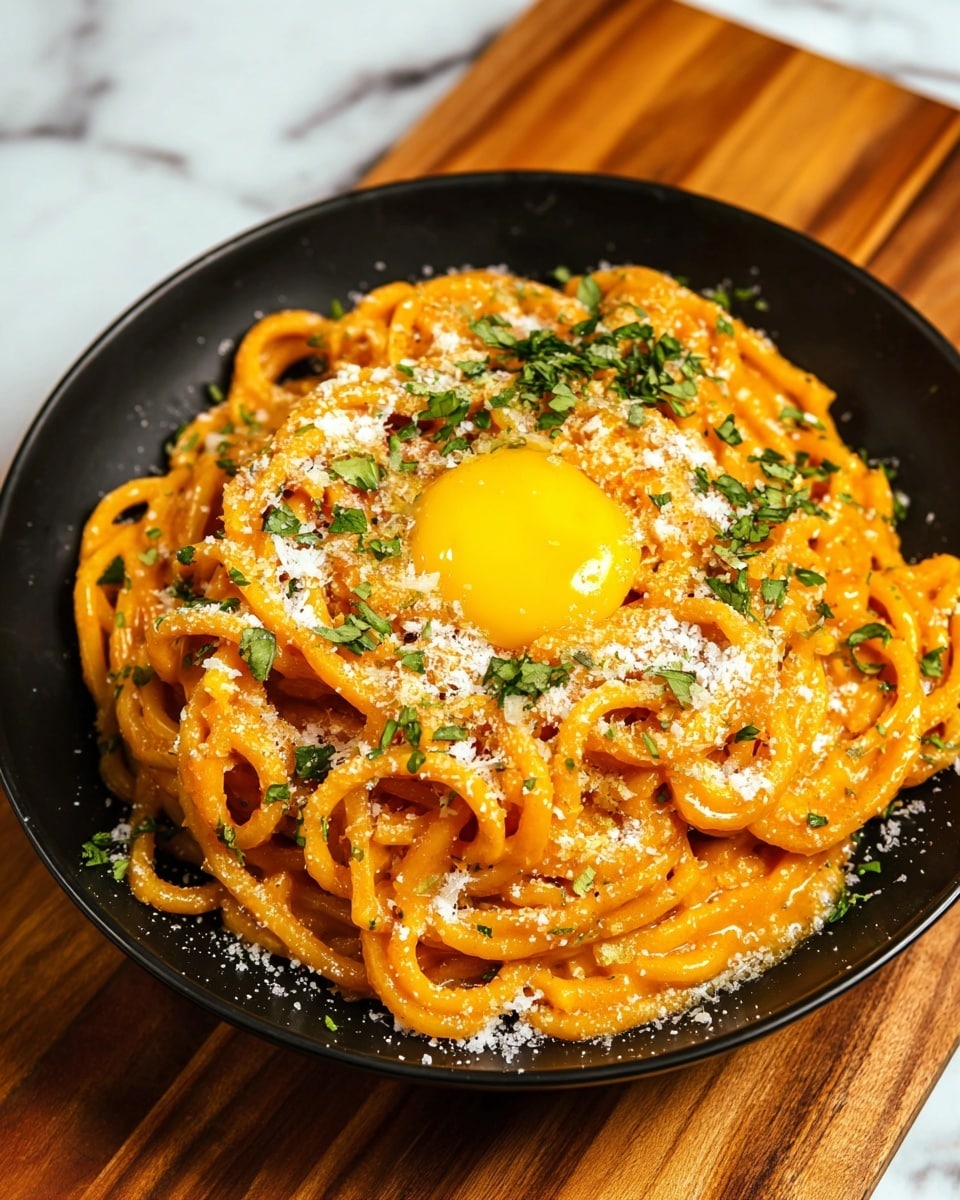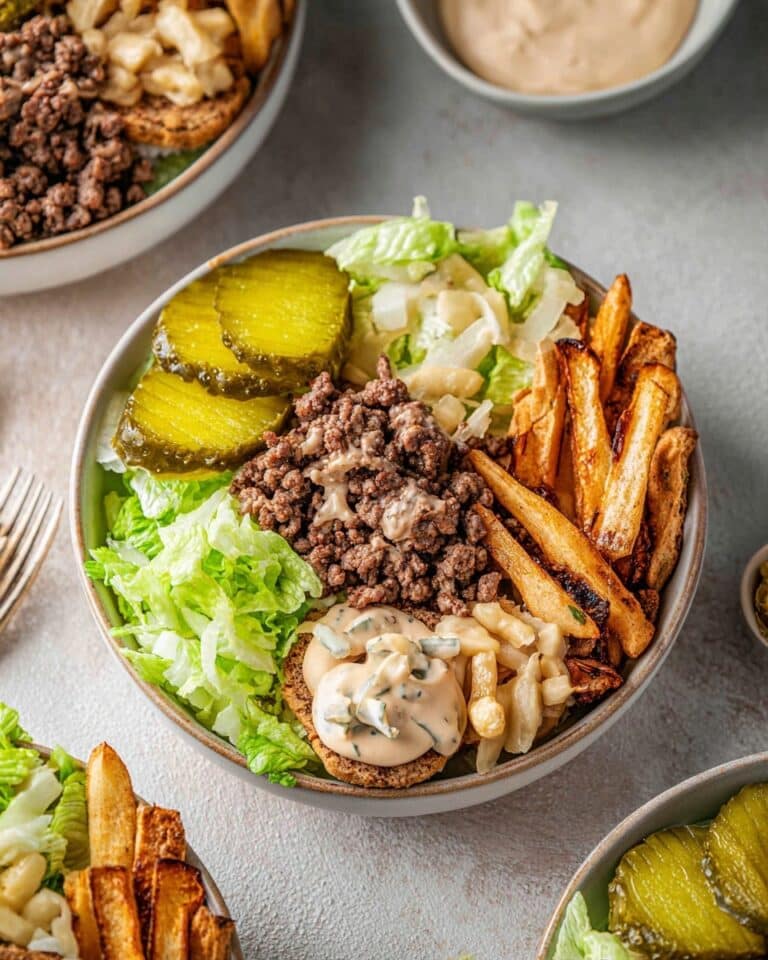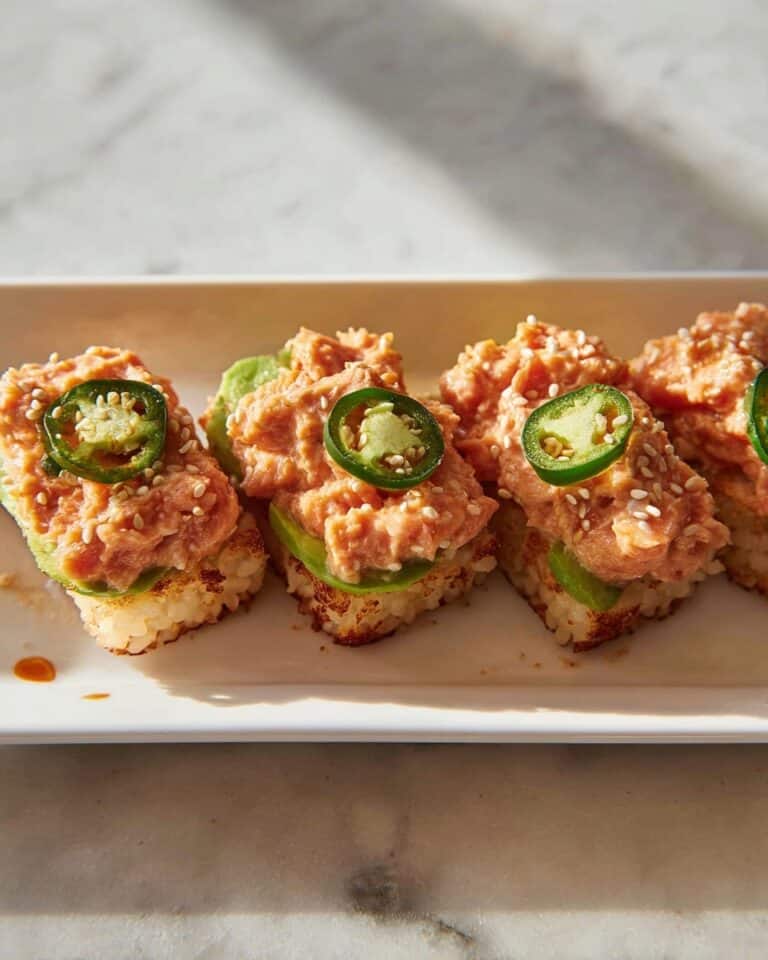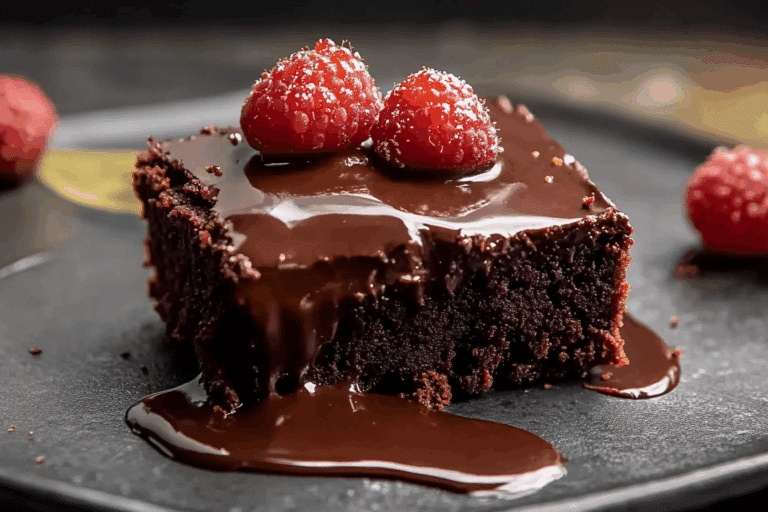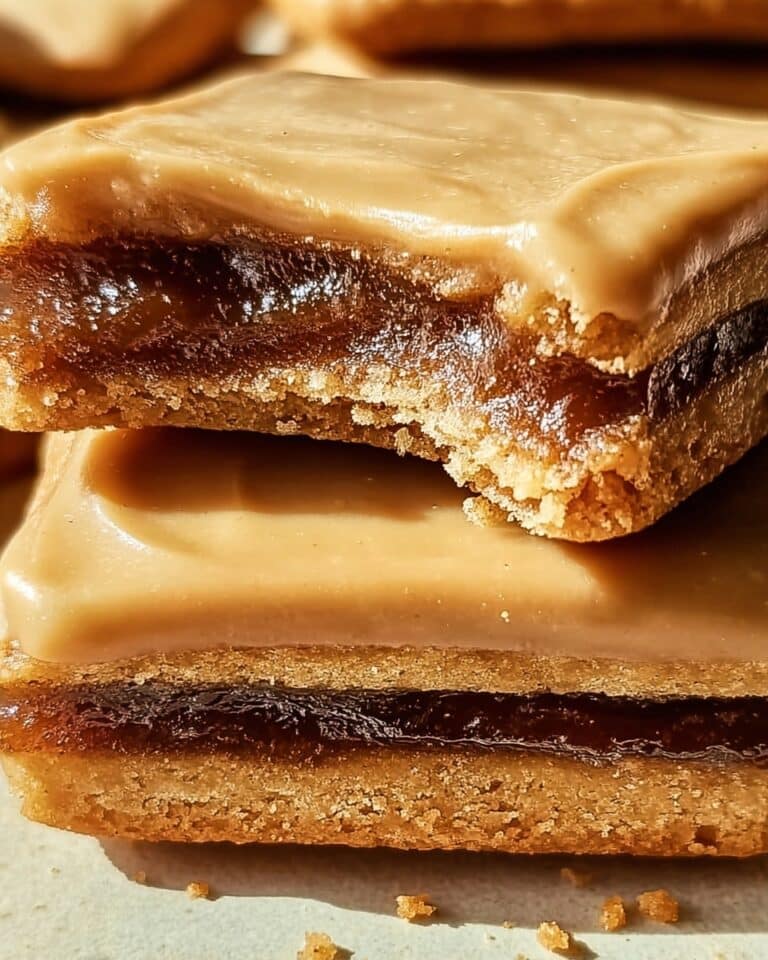Creamy Gochujang Udon Noodles Recipe
I have to tell you, this Creamy Gochujang Udon Noodles Recipe quickly became one of my favorite midweek dinners. It hits that beautiful balance between spicy, creamy, and just downright comforting — perfect when you want something a bit adventurous but still cozy. Plus, it comes together super fast with mostly pantry staples and frozen udon noodles, which is a total win when you’re short on time.
What I really love is how the gochujang adds a subtle heat and depth without overpowering the dish. The cream softens the spice just enough, creating this luscious sauce that clings beautifully to the noodles. If you’ve ever hesitated to try Korean flavors, this recipe is a gentle (and delicious) way in — trust me, you won’t regret it.
Ingredients You’ll Need
The ingredients for this Creamy Gochujang Udon Noodles Recipe all work together to build layers of flavor and texture. Frozen udon noodles keep things super easy, and the combination of garlic, shallots, and gochujang creates that signature savory heat. Here’s a quick tip: try to find fresh shallots if you can — they add a sweeter, milder onion flavor that’s just perfect here.
- Frozen udon noodles: Convenient and chewily satisfying, frozen works better than dried for this creamy sauce.
- Unsalted butter: Helps build a rich base without adding too much salt—you control the seasoning better.
- Garlic (minced): Fresh garlic really wakes up the flavors, so skip the jarred stuff if you can.
- Shallots (chopped): Milder and sweeter than onions, they melt into the sauce beautifully.
- Gochujang: The star of the show—a Korean chili paste that’s spicy, sweet, and packed with umami.
- Heavy cream: Keeps this dish decadently creamy and balances the spice.
- Reserved noodle water: Don’t throw it away! It’s perfect for loosening the sauce while keeping that silky texture.
- Soy sauce: Adds that deep savory saltiness.
- Gochugaru: Korean red pepper flakes, for an extra kick if you like it hotter.
- Green onion (chopped): Brightens up the whole dish as a fresh garnish.
- Grated parmesan cheese: I know, parmesan with gochujang might sound odd, but it adds a nutty, salty finish that just works.
- Egg yolk (optional): Stir it in at the end for an ultra-rich sauce that coats every noodle.
Variations
I love to shake things up based on what I have around. Creamy Gochujang Udon Noodles Recipe is forgiving and versatile, so personalize away! Whether you’re vegan, want it extra spicy, or want to toss in some protein, there’s room to make this your own.
- Veggie-loaded: I often add sautéed mushrooms or spinach for extra greens and texture—it makes the dish feel heartier without complicating things.
- Protein boost: Grilled chicken, shrimp, or even crispy tofu works wonders in this sauce. I like to marinate my tofu in a little soy sauce and garlic before adding it.
- Dairy-free option: Swap the heavy cream for full-fat coconut milk or cashew cream to keep it creamy but vegan-friendly.
- Extra spicy: Double down on the gochugaru or toss in a few chili flakes while cooking if you like it fiery — I do on occasion!
- Less creamy: If you want a lighter sauce, you can reduce the cream and increase the reserved noodle water—still tasty but with less indulgence.
How to Make Creamy Gochujang Udon Noodles Recipe
Step 1: Prep and Cook the Udon Noodles
Start by bringing a pot of water to a boil and cook your frozen udon noodles according to package instructions — usually just a few minutes until tender and separate. Pause to reserve about half a cup of the cooking water before draining. This starchy water is magic for adjusting your sauce texture later, so save it carefully in a bowl nearby.
Step 2: Build Your Flavor Base
In a large skillet or wok, melt the butter over medium heat. Toss in the minced garlic and chopped shallots and sauté for 2-3 minutes until fragrant and translucent—watch closely so they don’t brown or burn. This step really fills the kitchen with a wonderful warm aroma; it’s one of those comforting moments you’ll look forward to.
Step 3: Make the Creamy Gochujang Sauce
Add the gochujang paste to the skillet and stir well to combine it with the butter, garlic, and shallots. The paste will loosen up and deepen in color. Next, gently pour in the heavy cream and reserved noodle water, stirring constantly to mix everything smoothly. Sprinkle in the soy sauce and gochugaru, tasting along the way to find your perfect balance. The sauce should become silky and lightly thickened—if it’s too thick, add a splash more noodle water.
Step 4: Toss and Finish the Noodles
Drop your cooked udon noodles back into the skillet with the sauce. Toss everything gently but thoroughly to make sure each noodle is coated. This part is incredibly satisfying — those glossy, fiery noodles will have you eager to dig right in. If you’re adding the egg yolk, now’s the time: just stir it in off the heat to enrich the sauce without scrambling it.
How to Serve Creamy Gochujang Udon Noodles Recipe

Garnishes
I always sprinkle chopped green onions on top to give a fresh, slightly sharp contrast to the richness. A little grated parmesan cheese adds a lovely nutty and salty punch that really sets the dish apart — it might sound unexpected, but trust me on this one! Occasionally, I add toasted sesame seeds for crunch and an extra nutty hint.
Side Dishes
I like serving these noodles alongside quick kimchi or pickled cucumbers to cut through the creamy heat. A simple steamed vegetable like broccoli or snap peas works, too, to add some green freshness. If you want to go all-in Korean, a small bowl of seaweed salad is fantastic with this.
Creative Ways to Present
For a special dinner, I sometimes plate the noodles in a shallow bowl, twirling them neatly, and then drizzle a little extra gochujang sauce lightly on top for color contrast. Adding a soft-boiled egg halves makes the dish look extra inviting and indulgent. It’s always fun to create a little DIY garnish station with extra green onions, chili flakes, and parmesan so everyone can customize theirs.
Make Ahead and Storage
Storing Leftovers
If you have any leftovers (rare in my house!), store them in an airtight container in the fridge for up to two days. It’s best to separate the noodles from any extra liquid, if possible, to avoid sogginess. When you’re ready, you can reheat them gently on the stove or in the microwave, adding a splash of water or cream to revive that creamy texture.
Freezing
I don’t typically freeze this dish because cream-based sauces can separate when thawed, and udon noodles can get a little mushy. But if you do need to freeze, I recommend freezing just the sauce separate from the noodles and combining fresh when ready to eat.
Reheating
To reheat, warm the noodles gently in a skillet over low heat with a little extra cream or reserved noodle water to loosen the sauce. Stir often to keep the sauce creamy and prevent sticking. You’ll want to avoid microwaving directly without added moisture, as the noodles can dry out and the sauce may split.
FAQs
-
Can I use dried udon noodles instead of frozen for this Creamy Gochujang Udon Noodles Recipe?
You can, but I prefer frozen udon because it stays chewy and tender when cooked, which pairs better with the creamy sauce. Dried udon might be a little firmer or require more cooking time, and the sauce texture can be a bit different. If you use dried, cook according to package instructions and reserve some of the cooking water for your sauce.
-
What can I substitute for gochujang if I can’t find it?
If you can’t find gochujang, a mix of chili paste (like sambal oelek) and a bit of miso paste or soy sauce can mimic the sweet, spicy, and umami qualities. It won’t be exactly the same but will still result in a tasty, flavorful dish.
-
Is this recipe spicy?
This Creamy Gochujang Udon Noodles Recipe has a gentle heat that’s balanced by the creaminess. If you prefer mild, use less gochujang and skip or reduce gochugaru. For spice lovers, you can add more gochugaru or red chili flakes.
-
Can I make this vegan?
Absolutely! Swap the butter for a plant-based alternative and replace heavy cream with coconut milk or cashew cream. Just make sure your gochujang doesn’t contain any fish-based ingredients, as some varieties do.
-
How do I adjust the sauce thickness?
The reserved noodle water is key for adjusting sauce consistency. If your sauce feels too thick, add a bit more noodle water or cream to loosen it up. Conversely, simmer gently to thicken if it’s too runny.
Final Thoughts
This Creamy Gochujang Udon Noodles Recipe is one of those dishes I keep coming back to whenever I want simple comfort with a punch of exciting flavor. It’s quick enough for a weeknight, but special enough to impress friends or treat yourself. Give it a go, and I promise you’ll find yourself craving it again and again — and maybe even mixing in your own favorite twists along the way!
Print
Creamy Gochujang Udon Noodles Recipe
- Prep Time: 10 minutes
- Cook Time: 15 minutes
- Total Time: 25 minutes
- Yield: 2 servings 1x
- Category: Main Course
- Method: Stovetop
- Cuisine: Korean Fusion
Description
This Creamy Gochujang Udon Noodles recipe offers a perfect fusion of spicy, creamy, and savory flavors. Using frozen udon noodles, it is quickly prepared with a rich gochujang and heavy cream sauce, enhanced by garlic, shallots, and a touch of soy sauce. Garnished with green onions and Parmesan cheese, this dish provides a comfort food experience with a Korean-inspired twist, ideal for a satisfying meal any day of the week.
Ingredients
Noodles and Sauce
- 2 pack frozen udon noodles
- 3 tbsp unsalted butter
- 3 clove garlic, minced
- 2 shallots, chopped
- 1½ tbsp gochujang (Korean red chili paste)
- ½ cup heavy cream
- ½ cup reserved noodle water
- 2 tsp soy sauce
- 1 tsp gochugaru (Korean chili flakes)
Garnish and Optional
- 1 green onion, chopped (for garnish)
- Grated Parmesan cheese
- Egg yolk (optional)
Instructions
- Prepare the noodles: Cook the frozen udon noodles according to package instructions, usually by boiling them in water until tender but still chewy. Reserve ½ cup of the noodle cooking water before draining the noodles.
- Sauté aromatics: In a large skillet or pan, melt 3 tablespoons of unsalted butter over medium heat. Add the minced garlic and chopped shallots, cooking until fragrant and translucent, about 2-3 minutes.
- Add gochujang and combine: Stir in 1½ tablespoons of gochujang and 1 teaspoon of gochugaru to the pan, cooking for 1 minute to release their flavors while stirring continuously to prevent burning.
- Make the creamy sauce: Pour in ½ cup of heavy cream and the reserved ½ cup noodle water to the pan. Add 2 teaspoons of soy sauce and stir well to combine. Allow the sauce to simmer gently for 2-3 minutes to thicken slightly.
- Toss noodles in the sauce: Add the drained udon noodles to the skillet, tossing thoroughly to coat each noodle with the creamy gochujang sauce. Cook together for another 1-2 minutes until heated through and sauce is creamy and luscious.
- Plate and garnish: Serve the noodles hot, garnished with chopped green onions and a generous sprinkle of grated Parmesan cheese. Optionally, add an egg yolk on top of each serving for extra richness, resembling a carbonara style finish.
Notes
- You may adjust the amount of gochujang and gochugaru depending on your preferred spice level.
- If you do not have gochugaru, you can substitute with red chili flakes but the flavor will be slightly different.
- The optional egg yolk adds richness similar to a carbonara; use fresh, high-quality eggs if including.
- For a lighter version, substitute heavy cream with half-and-half or coconut milk, though this will alter the creaminess and flavor.
- Garnishing with Parmesan is optional but provides a nice savory depth that complements the spice.
Keywords: Creamy Udon, Gochujang Noodles, Spicy Korean Pasta, Udon with Gochujang Sauce, Easy Korean Recipes

